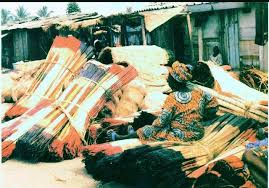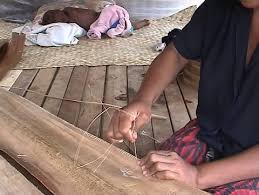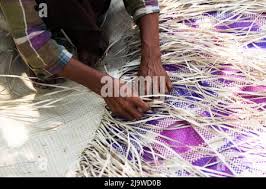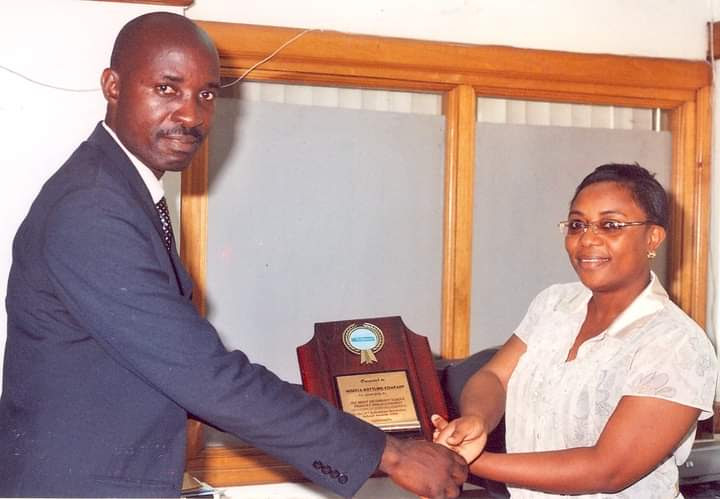![]()
If you’ve landed on this article page, you’re probably searching for a
good business idea—an idea that’s light on the pocket but heavy on
returns, promising both a fulfilling journey and potential profit.
|
How to start a lucrative Mat Weaving Business in Nigeria
Mat weaving is a common craft among many women and children
across various ethnic groups in Nigeria. Mat weaving is commonly
done by using the hand. The process of mat weaving starts with
identification and harvest of pliable materials like reed, oak,
hickory and willow. Pliable materials are taken fresh from the
farm and moved to a convenience where weaver can sit and start
hand weaving. Reed is easily available and its large presence in
Badagry, Oke Ogun region, Oyo and other parts of Yoruba land has
helped the people to learn the craft.
The art of mat weaving stands out as a testament to both the
practical ingenuity and artistic prowess of its people. Mat
weaving is also one of the indigenous crafts we have in Nigeria,
old as man and even older than the independence of the people of
Nigeria.
Mat weaving holds a special place in Nigerian society, deeply
rooted in tradition yet adaptable to modern life. It is non
tribal centric, as all tribes and cultures have their unique way
of producing beautiful mats that match their region.
In Nigeria, mats serve a multitude of purposes beyond their
practical uses. They are an integral part of ceremonies,
rituals, and daily life. From birth to death, mats accompany
individuals on their journey, symbolising protection, comfort,
and unity within communities.
Mastering The Craft: Weaving mats is a meticulous process that
requires patience, skill, and a deep understanding of natural
materials.
Harvesting and transporting a bundle of mat stalks to the
homestead takes a full day. The smothering and drying stage
commences the second day, with slicing of mat stalks. A
sickle-like knife is used to slice the content (pulp) out of the
mat stalk. After sun-drying for 2-3days, the sliced stalks are
dyed or left plain.
However after harvesting, the Plant is been scraped and then
dipped inside chemicals like “Jelu (Purple)”, “Buke (Red)” and
“Mokere (Orange). This is done in other to add aesthetic to the
design of the mat.
The weaving process itself is a labour of love, often passed
down from one generation to the next. Skilled artisans deftly
manipulate the materials, intertwining them to form intricate
patterns and motifs.
From simple geometric shapes to elaborate floral designs, the
possibilities are endless, limited only by the weaver’s
imagination.
Preserving Cultural Identity: The preservation of traditional
crafts like mat weaving is more important than ever. For many
Nigerian artisans, mat weaving is not just a means of income but
a way of preserving their cultural identity and heritage.
It would take a very hardworking weaver four to five days to
produce one big coloured mat and if the weaver has to add
diagrammes, then more days would be required.
One has to move beyond the conventional production processes to
make good gains from the business.
One person should not necessarily have to undertake the
whole process singlehandedly. The production process should be
broken down to make weaving faster, better and more rewarding.
You can produce close to 30 mats a week. You can do this by
dividing the whole process into segments. For instance, some
people are in charge of acquiring the stalk, while others design
and dye, and the third group takes care of the marketing. With
this method, you will
never regret
venturing into the business.
The idea of departmentalising mat weaving process has enabled
mat producers to
produce mat throughout the year, because they can
buy as much stalk as is available, store and use them
even during the rainy season, when planters are cultivating
fresh mat stalk. Besides, the longer you store this major raw
material, the drier they become and the better they would be for
weaving
Different types of mats are available, these include tablemats;
drink covers, sleeping mats, curtains, as well as door blinds.
One can experiment with the materials as much as possible. What
really matters, however, is knowing how to apply the right
technique to achieve the right result.
You can make up to N300k in a month from mat weaving and more
during dry season. Just try as much as possible to make them
beautiful by combining colours and sometimes inscribing nice
diagrammes like flowers, this boosts prices,
Though the stalk mat does not last as long as the fibre type, it
could serve as a coolant, especially during hot season, when
temperature is high. It also absorbs sweat, which could be dried
off with a little heat. Some people like it for these reasons.
Indeed, one of the many challenges they
face is meeting the demand for local mats.
There are two types of mats: one that is purposely designed to
cover rooftops and the other for spreading on the floor for
people to lay on for relaxation or religious activities or even
for beautification, depending on what the user wants. These mats
are made of the same material, but while the one for the rooftop
is stronger and more expensive, the general one used at home are
weaker, but more colourful.
Hotels and resort homes come for the rooftop mats. They could be
dyed to different colours depending on the taste of the buyer.
Just like the local sleeping mats, the rooftop mats do not
generate heat, as they tend to absorb heat, though they need to
be fumigated once in a while so that they don’t become havens to
rodents and insects. They could also be used to construct
makeshift shade for picnickers at the beach,
Nigerian culture, mat weaving stands as a way of reconnecting
with the past, to interpret the future. Its intricate patterns
and enduring significance serve as a reminder of the resilience
and creativity of the Nigerian people.
Get our Practical Training guide on Mat Weaving
Business in Nigeria. This guide will provide a detailed
roadmap on how to start a Mat Weaving Business in Nigeria, from
market research to operational strategies, ensuring you have all
the information needed to succeed in the
Business in
Nigeria.
|







